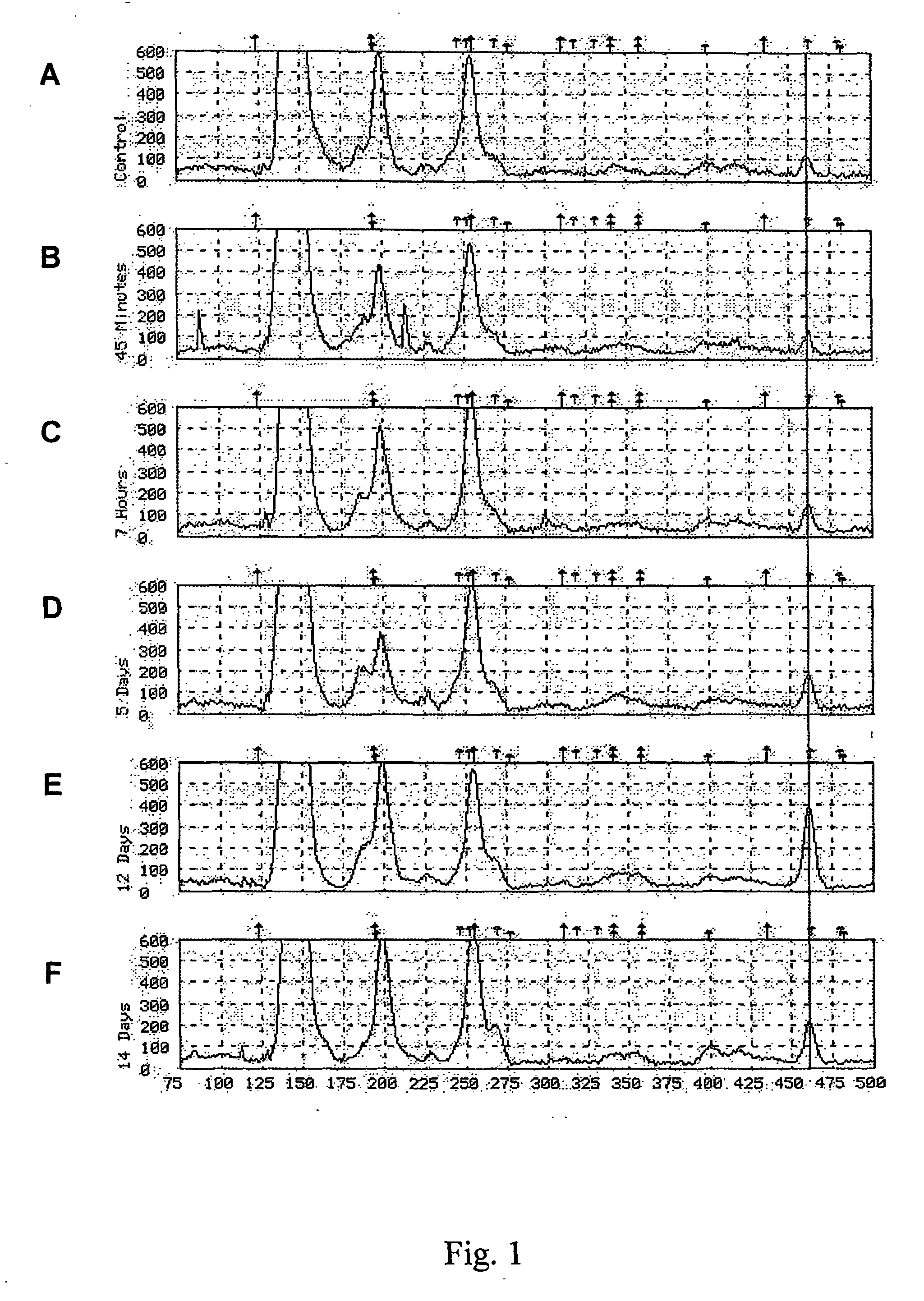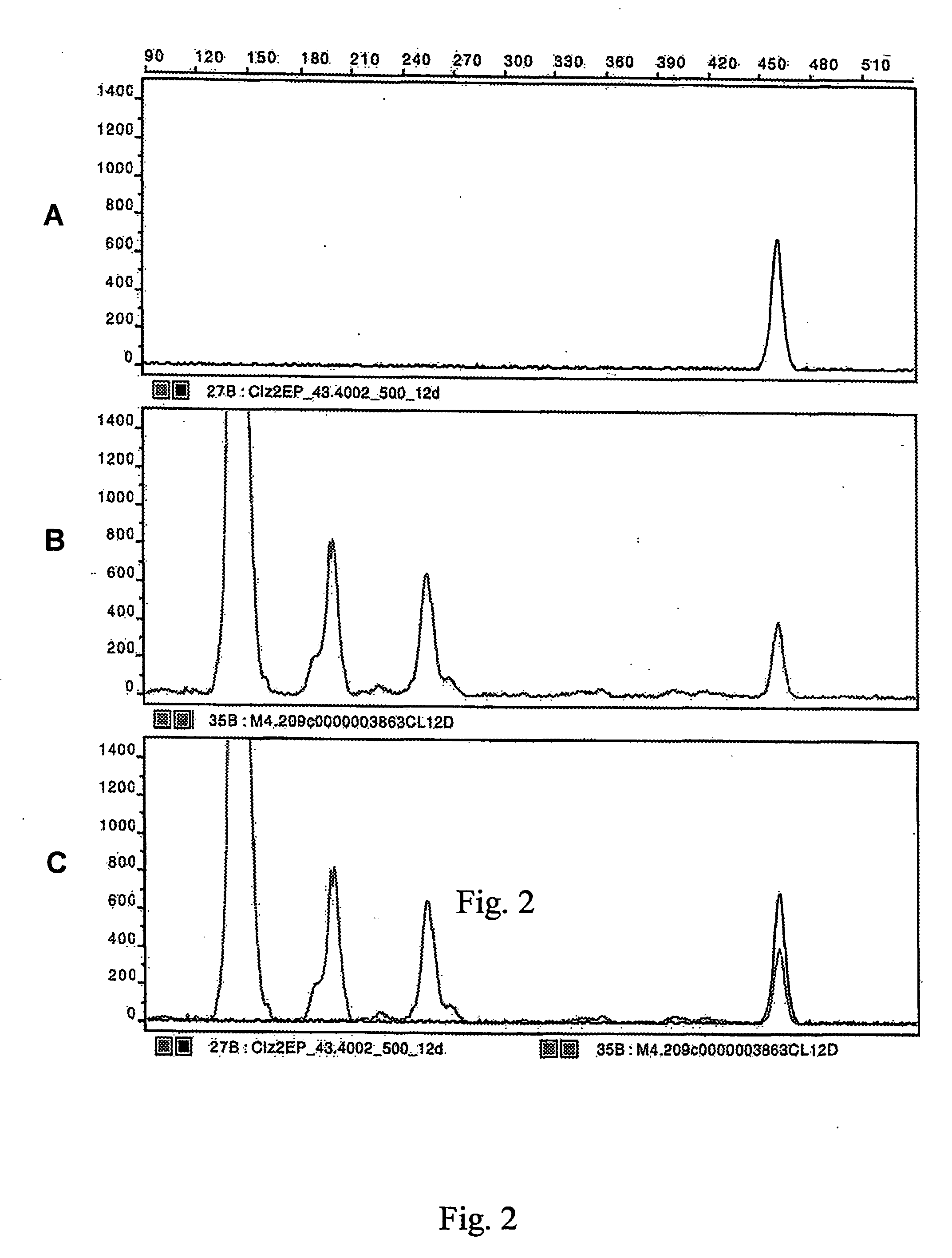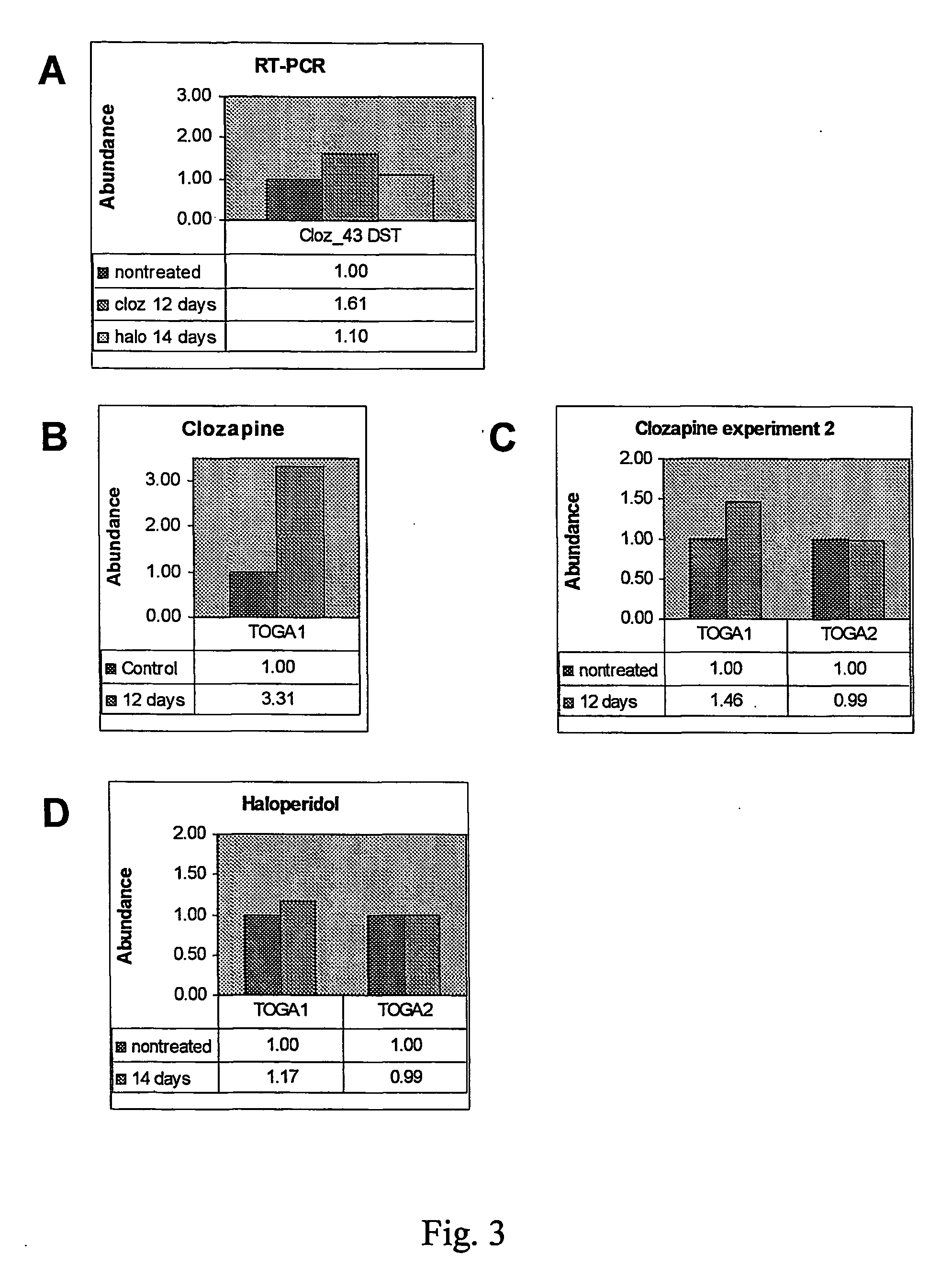Gene expression in the central nervous system regulated by neuroleptic agents
- Summary
- Abstract
- Description
- Claims
- Application Information
AI Technical Summary
Benefits of technology
Problems solved by technology
Method used
Image
Examples
example 1
Identification and Characterization of Polynucleotides Regulated by Neuroleptic Drugs
[0127] Male C57B1 / 6J mice (20-28 g) were housed in groups of four on a standard 12 / 12 hour light-dark cycle with ad libitum access to standard laboratory chow and tap water. For the experimental paradigms, mice were divided into groups of 25 and subjected to the following treatments:
[0128] Control groups: Mice received a single injection of sterile saline (0.1 ml volume), or no injection, and were sacrificed after 45 minutes.
[0129] Acute neuroleptic treatment: Mice received a single intraperitoneal injection of the atypical neuroleptic clozapine (7.5 mg / kg). Animals were sacrificed after 45 minutes.
[0130] Chronic neuroleptic treatment: Mice received daily subcutaneous injections of clozapine (7.5 mg / kg) or haloperidol (4 mg / kg) for time periods of 5 days to 2 weeks.
[0131] All animals were sacrificed in their cages with CO2 at the indicated times. Brains were rapidly removed and placed on ice. T...
example 2
Characterization of CLZ 43
[0167] Male C57B1 / 6J mice (20-28 g) were housed as previously described in Example 1. The same experimental paradigm used in Example 1 for clozapine treatment was used for the various analyses described below. Briefly, in the clozapine studies, the control group mice received a single injection of sterile saline (0.1 ml volume), or no injection, and were sacrificed after 45 minutes. The mice subjected to acute clozapine treatment were given a single intraperitoneal injection of clozapine (7.5 mg / kg) and sacrificed after 45 minutes or 7 hours, as described in Example 1. The mice subjected to chronic clozapine treatment received daily subcutaneous injections of clozapine (7.5 mg / kg) for 5 days, 12 days or 14 days. All animals were sacrificed in their cages with C02 at the indicated times. Brains were rapidly removed and placed on ice. The striatum, including the nucleus accumbens, were dissected out and placed in ice-cold phosphate-buffered saline. The mRNA ...
example 3
Characterization of CLZ 40
[0176] Animals were treated with clozapine and the mRNA was prepared according to the method described in Example 1. The TOGA™ data shown in FIG. 6 was generated with a 5′-PCR primer (C-G-A-C-G-G-T-A-T-C-G-G-T-T-G-T; SEQ ID NO: 26) paired with the “universal” 3′ primer (SEQ ID NO: 23) labeled with 6-carboxyfluorescein (6FAM, ABI) at the 5′ terminus. PCR reaction products were resolved by gel electrophoresis on 4.5% acrylamide gels and fluorescence data acquired on ABI377 automated sequencers. Data were analyzed using GeneScan software (Perkin-Elmer). In addition, this primer was shown to produce a DST that appeared regulated in mice treated with morphine (FIG. 7).
[0177] For the morphine studies, male C57B1 / 6J mice (20-28 g) were housed as previously described in Example 1 and divided into the following groups: 1) a control group, in which the mice were subcutaneusly implanted with one placebo pellet upon halothane anaesthesia; 2) an acute morphine group, ...
PUM
| Property | Measurement | Unit |
|---|---|---|
| Fraction | aaaaa | aaaaa |
| Fraction | aaaaa | aaaaa |
| Fraction | aaaaa | aaaaa |
Abstract
Description
Claims
Application Information
 Login to View More
Login to View More - R&D
- Intellectual Property
- Life Sciences
- Materials
- Tech Scout
- Unparalleled Data Quality
- Higher Quality Content
- 60% Fewer Hallucinations
Browse by: Latest US Patents, China's latest patents, Technical Efficacy Thesaurus, Application Domain, Technology Topic, Popular Technical Reports.
© 2025 PatSnap. All rights reserved.Legal|Privacy policy|Modern Slavery Act Transparency Statement|Sitemap|About US| Contact US: help@patsnap.com



